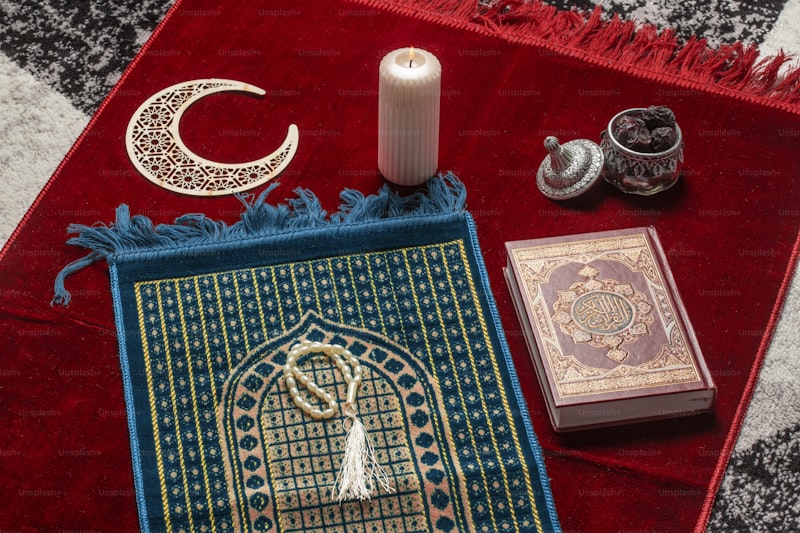Exploring the Deep Threads of Symbolism in Cultural Rituals
Unveiling Symbolism in Cultural Rituals
Symbolism plays a crucial role in cultural rituals, transcending mere actions to convey deep meanings and traditions. By examining various cultures, we can unveil how symbols in rituals connect community, history, and identity, enriching our understanding of human experience.
Understanding the Basics of Symbolism
At its core, symbolism involves using signs, words, or objects to represent broader concepts or ideas. In cultural rituals, symbols can refer to a variety of elements, including:
- Colors - Different colors can evoke distinct emotions or signify particular beliefs.
- Objects - Items used in rituals often carry significant meaning.
- Actions - The gestures or movements in rituals can symbolize deeper spiritual meanings.
The Importance of Rituals in Culture
Cultural rituals are events that involve structured activities, often rooted in tradition. They range from religious ceremonies to communal celebrations, and they act as vital links within societies. Through rituals, communities can:
- Celebrate Milestones: Events such as weddings, graduations, or the birth of a child.
- Honor Ancestors: Many cultures hold rituals to pay homage to those who came before them.
- Unite the Community: Rituals foster social bonds and provide shared experiences.
Examples of Symbolism in Cultural Rituals Around the World
To further understand the significance of symbolism in rituals, let’s delve into specific examples from various cultures:
1. Native American Powwows
Powwows represent a rich array of cultural symbolism, including:
- Feathers: Often worn as headgear or accessories, they symbolize honor and respect.
- Drums: The drumbeat serves as a heartbeat of the community, connecting participants spiritually.
- Dance: Each dance has a distinct story, representing various cultural narratives.
2. Hindu Weddings
Hindu weddings are imbued with symbols that signify unity and prosperity:
- Saat Phere: The couple circles a sacred fire seven times, symbolizing their vows and commitment.
- Turmeric Paste: Applied during rituals, it is believed to bring good luck and purify the couple.
- Bridal Mehndi: Intricate henna designs symbolize love and joy.
3. Japanese Tea Ceremony
The Japanese tea ceremony (Chanoyu) embodies mindful appreciation, with several symbols:
- Tea Utensils: Each item used carries symbolic value, representing harmony and respect.
- Seasonal Decorations: The choice reflects the connection to nature and the beauty of impermanence.
- Quietness and Simplicity: The process highlights the importance of being present in the moment.
Table: Overview of Symbolism in Various Cultural Rituals
| Cultural Ritual | Key Symbols | Meanings |
| Native American Powwow | Feathers, Drums, Dance | Honor, Spiritual connection, Storytelling |
| Hindu Wedding | Saat Phere, Turmeric, Mehndi | Commitment, Luck, Joy |
| Japanese Tea Ceremony | Tea Utensils, Seasonal Decorations, Quietness | Harmony, Nature appreciation, Presence |
Common Questions About Symbolism in Cultural Rituals
As we explore the rich tapestry of symbolism in cultural rituals, it’s common for people to have questions. Here are some of the frequently asked questions:
- What is the role of symbols in religious rituals? Symbols in religious rituals often convey spiritual meanings and beliefs, serving as a bridge between the sacred and the mundane.
- How do symbols function in daily life? Everyday symbols can reinforce cultural identity and values, mirroring the significance we find in larger rituals.
- Can a symbol have different meanings in different cultures? Absolutely! The interpretation of symbols can vary widely across cultures, reflecting diverse beliefs and values.
Conclusion: The Essence of Symbolism in Cultural Rituals
In conclusion, the exploration of symbolism in cultural rituals unveils the profound connections we share as human beings. Rituals serve not merely as cultural practices but as vital expressions of meaning, identity, and community. As we engage with different cultures, understanding the symbols within their rituals helps us appreciate the complexity and richness of human experience. Whether you are looking to deepen your knowledge or participate in these cultural expressions, approaching them with respect and curiosity is essential. Remember that to truly embrace the essence of symbolism, one must not only observe but also seek to understand the underlying meanings that shape the rituals of various cultures.
